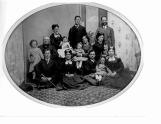1
Kenneth McKenzie was born in Renton Hall in Scotland in 1811. He was the laird at Renton Hall, his ancestral home in Scotland, when he was contracted by the Hudson Bay Company through their subsidiary the Puget's Sound Agricultural Company in 1852 to be a farm bailiff for the sum of 60 pounds per annum. In addition, the bailiff would get a third of the farm's profit, or share in a third of the loss of the farm. Craigflower was the most successful of the original four Hudson's Bay farms in Victoria, but Craigflower Farm never was profitable. After being contracted, McKenzie contracted his labourers, which, like him, were all Scotsmen, as well as contracting a teacher for his new school.Then his whole family, which at that time consisted of six children, the youngest being Wilhelmina, known as "Goodie", boarded the ship Norman Morison and took the five month voyage from Gravesend, England to Vancouver Island, and landed at Fort Victoria.
2
Renton Hall, Scotland- the ancestral McKenzie house21st Century, circa 2000
Craigflower, View Royal, Victoria, Canada
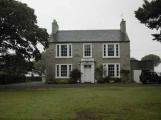
3
Kenneth McKenzie19th Century. circa 1870
Craigflower, View Royal, Victoria, Canada
 Credits:
Credits:A-01443
4
A view of the original farm as described by John Adams11 February 2007
Craigflower, View Royal, Victoria, Canada

6
The McKenzie Men19th Century, circa 1870
Craigflower, View Royal, Victoria, Canada
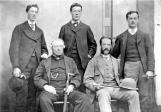 Credits:
Credits:A-01445
9
When the McKenzies arrived at Fort Victoria they already had their labourers with them to work on the farm. With the labour shortage on Vancouver Island and Mckenzie's inability to get along with many of his labourers, not all of the workers brought over on the Norman Morison for the farm stayed for their five year indenturement, while others stayed at the farm beyond their original five year indenturement. The purpose of the five years of indenturement was to work off the debt owed to the Hudson's Bay Company for paying the cost of the boat tickets to Vancouver Island and to ensure that the Company has the skilled workforce to achieve its mandate of farming the colony so that they did not lose their fur trading monopoly on the island.The original residents on the farm and their positions are as follows:
Kenneth McKenzie- Baliff
Robert Anderson- carpenter
Caleb Pike-labourer
George Deans- carpenter
James Deans- labourer
Peter Bartleman - blacksmith
John Bell- labourer
William Croghan- labourer
James Downie- labourer
Robert Melrose- labourer
George Greenwood- sail maker, sailed the 'Jessie'
Andrew Hume- carpenter
John Instant- labourer
James Liddle - labourer
Duncan Lidgate - carpenter
Joesph Montgomery- labourer
James Porter- labourer
John Russell- Blacksmith
James Stewart- land steward
James Tait- labourer
James Wilson- labourer
James Whyte- labourer
William Veitch- labourer
These men, for the most part, arrived at Fort Victoria on the ship with Kenneth MacKenzie and their own families. The ship they arrived on, the "Norman Morison" held the labourers for a neighbouring Puget's Sound Agricultural Company farm, being run by the Skinners.
10
Puget's Sound Agricultural Company Map19th Century, circa 1850s
Craigflower, View Royal, Victoria, Canada
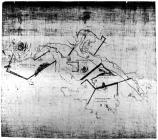
11
Craigflower farm artists renderingVictorian, 1860-1870
Craigflower, View Royal, Victoria, Canada
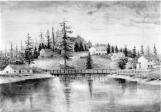 Credits:
Credits:PDP05360
12
On the farm each labourer was provided with a spot to build their own individual cottage with its own garden plot and a cow. Each of the cottages had a vent or fire place for heating and cooking. This was to help make each of the labourers more self-sustaining, and was part of a Scottish custom.13
William Veitch, Farm Labourer at Craigflower19th Century, circa 1880
Craigflower, View Royal, Victoria, Canada
 Credits:
Credits:A-01689
14
Captain George Greenwood, sailmaker for the 'Jessie' at Craigflower19th Century, circa 1870
Craigflower, View Royal, Victoria, Canada
 Credits:
Credits:G-02364
